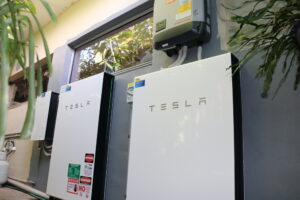The global elevators and escalators market is on a robust growth trajectory, with an expected Compound Annual Growth Rate (CAGR) of 6.3% from 2022 to 2030. Valued at USD 134.46 billion in 2021, the market is forecasted to reach USD 229.0 billion by 2030, fueled by increased urbanization, rising construction activities, and advancements in elevator and escalator technologies.
Market Overview
Elevators and escalators are essential components in modern infrastructure, enabling smooth vertical and horizontal transportation within residential, commercial, and industrial buildings. As urban landscapes continue to evolve, with taller skyscrapers and more complex transportation networks, the demand for these systems is expected to grow significantly.
The market for elevators and escalators encompasses the design, manufacturing, installation, and maintenance of these vertical and horizontal transportation systems. Innovations in product features, energy efficiency, and the increasing focus on sustainability are also contributing to the growing demand for advanced elevators and escalators worldwide.
𝐄𝐱𝐩𝐥𝐨𝐫𝐞 𝐓𝐡𝐞 𝐂𝐨𝐦𝐩𝐥𝐞𝐭𝐞 𝐂𝐨𝐦𝐩𝐫𝐞𝐡𝐞𝐧𝐬𝐢𝐯𝐞 𝐑𝐞𝐩𝐨𝐫𝐭 𝐇𝐞𝐫𝐞:
https://www.polarismarketresearch.com/industry-analysis/elevator-escalator-market
Key Market Trends
- Urbanization and Growing Construction Activities
The surge in urbanization is one of the major drivers of the elevators and escalators market. As the global population increasingly migrates to urban centers, there is a heightened demand for infrastructure development, particularly in densely populated areas. Tall buildings, commercial centers, and mixed-use developments all require reliable vertical and horizontal transportation systems.
In rapidly developing regions, such as Asia-Pacific and Africa, the growth in construction projects, including residential, commercial, and public infrastructure, is fueling the need for efficient elevators and escalators. High-rise buildings and multi-story structures are increasingly being built to accommodate the growing urban population, contributing to the demand for these systems.
- Technological Advancements in Elevator & Escalator Systems
Technological innovations are transforming the elevators and escalators market, with modern systems becoming more efficient, safe, and user-friendly. The integration of smart technology, such as IoT (Internet of Things) and AI-powered features, is improving both operational performance and user experience.
For example, elevators are now equipped with predictive maintenance capabilities, allowing for real-time monitoring and performance analytics to reduce downtime. Escalators are increasingly being designed with energy-efficient motors and regenerative drives, which capture the energy produced during operation and feed it back into the building’s energy grid.
Additionally, the development of destination control systems in elevators, which optimize the number of stops based on passengers’ destination floors, is making elevators more efficient, reducing wait times, and improving overall energy savings.
- Increasing Demand for Energy-Efficient Solutions
As sustainability becomes a central focus in construction and infrastructure development, the demand for energy-efficient elevators and escalators is on the rise. Modern systems are designed to minimize energy consumption through advanced technologies like LED lighting, energy-efficient motors, and regenerative braking systems, which allow the systems to generate energy while in operation.
Many governments around the world are implementing stricter building codes and regulations, encouraging the adoption of green building practices. This includes the installation of energy-efficient elevators and escalators in both new and existing buildings. As a result, energy-efficient solutions are becoming a major trend in the industry, contributing to the market’s growth.
- Growing Focus on Safety Features
Safety is paramount in elevator and escalator systems, especially in high-traffic commercial and public buildings. As a result, manufacturers are increasingly incorporating advanced safety features into their products. Innovations such as intelligent emergency communication systems, earthquake-resistant elevators, and advanced braking technologies are enhancing safety and reliability.
The growing awareness of safety in public and commercial buildings is prompting stricter regulations on safety standards for elevators and escalators, driving demand for systems equipped with the latest safety technology.
Country-Wise Market Analysis
North America: Stable Growth Fueled by Infrastructure Renovations
North America, led by the United States and Canada, represents a significant portion of the global elevators and escalators market. The demand in this region is largely driven by renovation and modernization projects in existing buildings, especially in urban areas with aging infrastructure.
The region also benefits from the high adoption of smart building technologies, as well as the growing focus on energy-efficient solutions in the construction and real estate sectors. In addition, with many large cities having tall skyscrapers and complex multi-story buildings, there is a continuous need for reliable vertical transportation systems. This trend is expected to sustain growth in the North American elevators and escalators market.
Europe: Rising Demand for Eco-Friendly Solutions
Europe is another key market for elevators and escalators, driven by stringent regulations on energy consumption and sustainability. European countries are increasingly adopting green building standards and integrating sustainable technologies in their infrastructure projects. As a result, the demand for energy-efficient and eco-friendly elevators and escalators is growing in this region.
Moreover, with a large number of older buildings that require modernization, Europe presents significant opportunities for elevator and escalator replacements and upgrades. The need to retrofit existing buildings with energy-efficient solutions is expected to support market growth in the region.
Asia-Pacific: High Growth Potential Driven by Urbanization
The Asia-Pacific region is expected to witness the highest growth rate in the elevators and escalators market, primarily driven by rapid urbanization, increasing population, and substantial growth in infrastructure projects. Countries like China, India, and Japan are experiencing a boom in construction activities, including the development of residential, commercial, and public buildings that require elevators and escalators.
In addition, with the rise of smart cities and the implementation of cutting-edge technology in transportation systems, the demand for advanced elevators and escalators in Asia-Pacific is set to soar. China, in particular, is witnessing a strong demand for high-speed elevators in skyscrapers and multi-story buildings, contributing significantly to the market’s growth.
Middle East & Africa: Emergent Market with Strong Infrastructure Developments
The Middle East and Africa are emerging markets for elevators and escalators, with UAE, Saudi Arabia, and South Africa leading the charge in infrastructure developments. The demand in these regions is fueled by a growing number of large-scale construction projects, including commercial buildings, shopping malls, and residential complexes.
The Middle East is also known for its ambitious skyscraper and mega-project developments, which require advanced elevator and escalator systems. The growing focus on sustainability in the construction sector, particularly in the UAE, is driving the demand for energy-efficient elevators and escalators.
Latin America: Moderate Growth with Focus on Modernization
Latin America, with key markets such as Brazil and Mexico, is expected to see moderate growth in the elevators and escalators market. The growth is driven by ongoing urbanization, increasing construction projects, and the need to modernize existing infrastructure. Many cities in the region are seeing a rise in high-rise buildings and multi-story complexes, driving demand for efficient vertical transportation systems.
Conclusion
The global elevators and escalators market, valued at USD 134.46 billion in 2021, is expected to grow significantly at a CAGR of 6.3% from 2022 to 2030, reaching USD 229.0 billion by 2030. The market’s growth is primarily driven by urbanization, increasing construction activities, advancements in technology, and a rising focus on energy-efficient and sustainable solutions.
With technological innovations enhancing safety, energy efficiency, and operational efficiency, the elevators and escalators market is well-positioned for continued expansion. Additionally, the growing emphasis on green building standards and the modernization of aging infrastructure will further contribute to the market’s growth in the coming years.
As cities continue to evolve, and as the demand for sustainable and efficient transportation solutions rises, the global elevators and escalators market will play a critical role in shaping the future of urban infrastructure.
More Trending Latest Reports By Polaris Market Research:
In Vitro Diagnostics Quality Control Market
Gynecological Examination Chairs Market
Operating Room Integration Market









